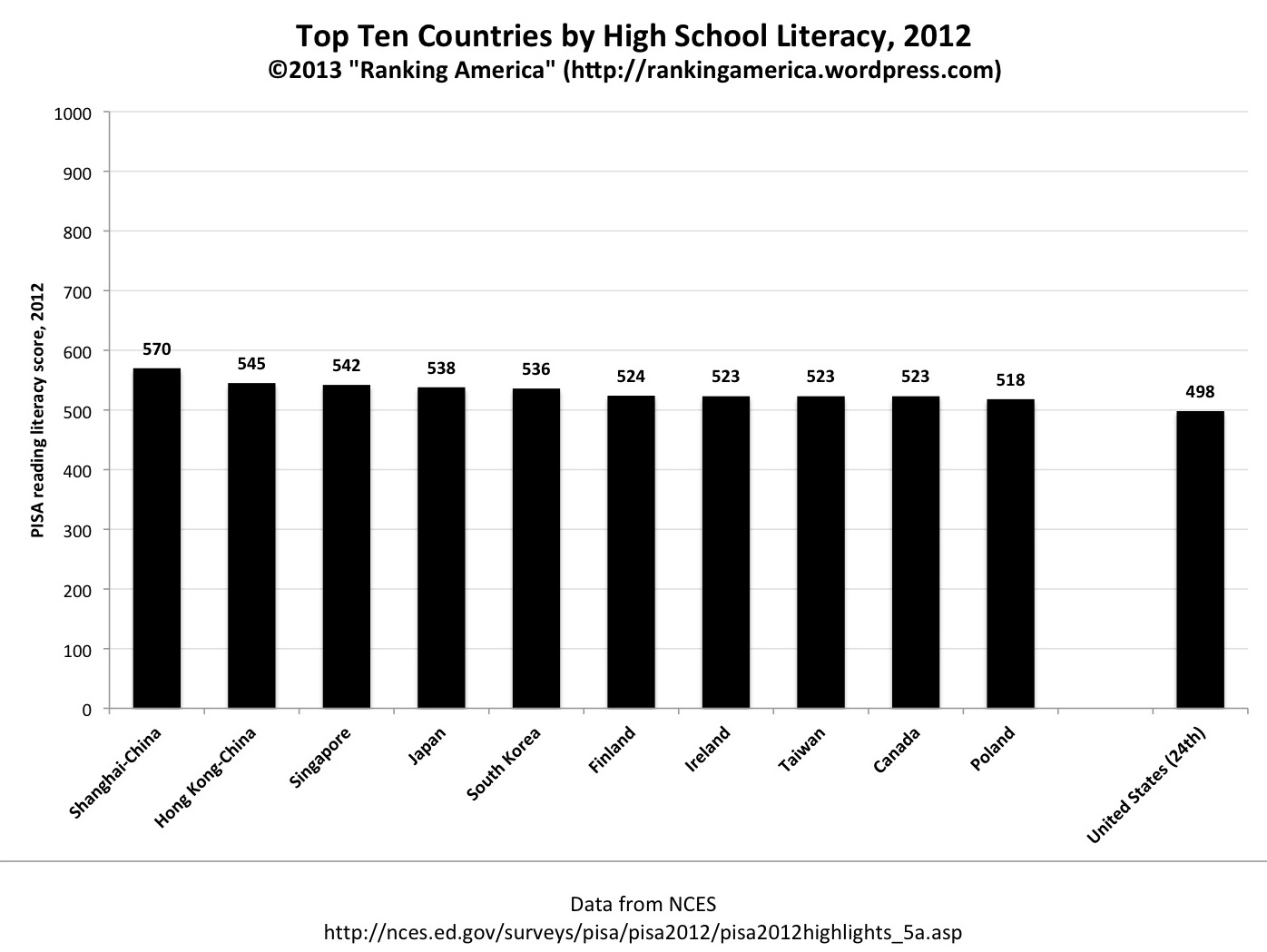
Where Does the US Rank in Education?
Many people have wondered where does the United States rank in education, particularly in math and science. While our schools lag behind other nations in math, reading, and science, the U.S. actually fares much better than you may think. Here’s why. Also read on to learn how to get a head start in science and reading. But before you judge our schools, consider how we compare to other countries. What can we learn from each other?
U.S. ranks behind other countries in math
According to the OECD, the U.S. ranks behind other countries in math education, with Massachusetts students faring no better than average in the world. This is due to a variety of factors, including how well the United States structures its math curriculum. More successful countries structure their curricula differently, teaching fewer topics in greater depth and in sequential order, allowing students to master one topic at a time.
Despite improving its math education, the United States lags behind many other nations in the OECD’s PISA tests. In 2015, the U.S. ranked thirty-fifth among 34 countries in math, but only ranked eighth in science. Overall, students scored about average in science and reading. In addition, the U.S. did better in reading and science than other countries, but the country’s overall ranking was not statistically significant. Among OECD nations, the United States scored lower than the average in all subjects except mathematics, while Asian countries outranked all other nations in math.
The latest PISA results show that the U.S. ranks behind other countries in math education for the second year in a row. According to the Organization for Economic Cooperation and Development, the U.S. scored below average in math among the most developed nations. In science and reading, however, the U.S. was near the international average. This is an indicator that the U.S. has a long way to go to catch up.
U.S. ranks better in reading
A recent survey showed that the average American’s reading skills were dropping. The findings came at a time when President Bush was ramping up his national commission on higher education, and were cited as proof of the failure of our nation’s colleges and universities. A new study challenges those findings, and taps into concerns about our nation’s declining global standing. How can we improve our reading education? The answer is surprisingly simple: implement more reading resources.
While the U.S. ranks near the middle when it comes to reading education, it has some significant gaps. We’re still far from being one of the top performers, as 19 percent of our students scored in the lowest two levels of the standardized test. Meanwhile, the gap between the bottom performers and top-performers has widened, with the reading score gap in the U.S. reaching almost 300 points. And that gap is not even close to closing, despite the fact that richer students scored higher than poorer students.
Despite the high-profile coverage of American schoolchildren’s poor performance, the numbers are still quite bleak. International tests, such as the PISA, show a widening achievement gap between students in high-performing countries and those in low-performing countries. While one in five 15-year-olds in the U.S. performed poorly in both tests, another 19 percent had trouble identifying main ideas in a text.
U.S. ranks better in science
The U.S. ranks poorly in math and science education, according to the latest PISA results. While we are not among the best teams in the world, we have made improvements in these areas. President Obama has called for the training of 100,000 new teachers in these fields. If he’s right, we can do better. Here are a few suggestions. Let’s look at what our competitors are doing and why.
International test scores aren’t as important as the final rankings of college teams. International tests measure student application of knowledge, and in science, the U.S. lags behind other world leaders. A report from the Brookings Institution shows that America’s PISA scores have been flat for the past decade. The TIMSS test measures trends in international mathematics and science assessments. The U.S. is significantly behind its international peers in math and science.
A recent study from the Pew Research Center shows that U.S. students scored better than those of their counterparts in math and science. However, the United States is still well below the international average for math and science. The country’s reading and science PISA scores were only slightly better, while its science scores were no better than average. In contrast, Finland slipped to a disappointing 24th place, despite its reputation as a beacon of educational reform.
Many people have wondered where does the United States rank in education, particularly in math and science. While our schools lag behind other nations in math, reading, and science, the U.S. actually fares much better than you may think. Here’s why. Also read on to learn how to get a head start in science and…
